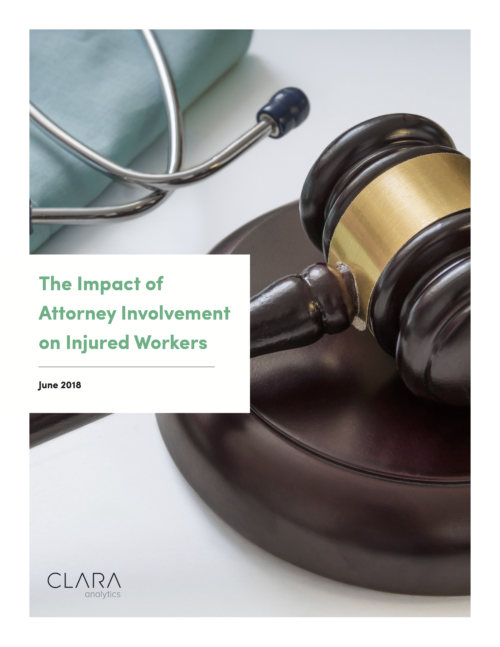The Impact of Attorney Involvement on Injured Workers
June 2018
Litigation in workers’ compensation has become a systemic problem. Some states are seeing the incident rates reach levels in excess of 50 percent of claims. The workers’ comp system simply was not designed for this. In fact, quite the opposite. Workers’ comp was created to remove the threat
of litigation by waiving the employee’s right to sue his or her employer for negligence, swapping it instead for a limited guarantee of care. Along the way, the system derailed, and the present impact of litigation on claims has forced costs to balloon. Care for injured workers has also suffered, and time spent away from jobs continues to drag on unnecessarily.
To remedy the situation, it is essential that the claims process gets back to a model that guarantees sufficient care for injured workers and eliminates, or at least significantly reduces, the need
for litigation.
Systemic change will require more than a shift in mindset, however. Organizations need to adopt practical tools and strategies that stave off litigation. Before they are convinced to spend the time, money and effort to transform how they handle claims, they need data that proves there is a positive payoff. The purpose of this paper is to assist in creating a factual basis for determining the cost and effects of litigation, providing the impetus for action.




